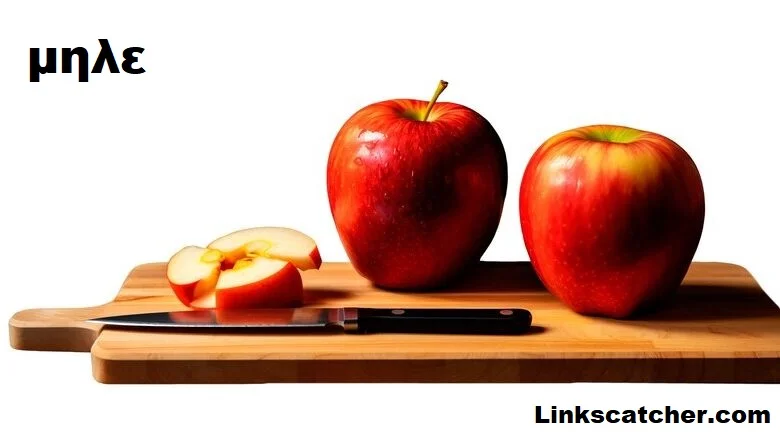
What is μηλε? You might be scratching your head over this intriguing term. μηλε (pronounced “Mee-leh”) refers to a multifaceted concept deeply rooted in history, culture, and tradition. This article will delve into its rich heritage, cultural significance, and the various ways it continues to influence our lives today. Ready for a journey through time and culture? Let’s dive in!
Origins of Mηλε
The origins of μηλε trace back to ancient civilizations, where it played a pivotal role in societal structures and everyday life. It was more than just a concept; it was a way of life, a symbol of unity and strength within communities.
Evolution over the Centuries
As centuries passed, the interpretation and use of μηλε evolved. From ancient rituals to modern celebrations, the essence of μηλε adapted to the changing times, yet its core values remained steadfast.
Cultural Significance
Role in Ancient Societies
In ancient societies, μηλε has revered as a symbol of prosperity and protection. It has often associated with various deities and was integral to many cultural rituals and practices.
Symbolism and Meanings
Mηλε symbolized various attributes such as strength, unity, and continuity. Its presence in cultural artifacts and literature highlights its importance across different eras and societies.
Mηλε in Literature
References in Ancient Texts
Ancient texts are replete with references to Mηλε. From epic tales to historical records, Mηλε often appears as a central theme, illustrating its pervasive influence.
Modern Literary Mentions
Even in contemporary literature, μηλε continues to inspire writers. Its rich symbolism and historical significance make it a popular subject in modern narratives.
Artistic Depictions

Artistic depictions of Mηλε in ancient art showcase its aesthetic and symbolic value. From intricate carvings to majestic sculptures, μηλε has left an indelible mark on the art world. Modern artists draw inspiration from Mηλε, incorporating its themes and symbols into their work. This enduring influence highlights the timeless nature of Mηλε’s cultural impact.
Traditional Practices
Traditional practices involving Mηλε often include elaborate rituals and ceremonies. These practices are not only a celebration of heritage but also a means of preserving the essence of μηλε. Mηλε is at the heart of many festivities and celebrations, serving as a focal point for communal gatherings and joyful occasions.
Mηλε in Mythology
Mythology is rich with stories of Mηλε, depicting it as a powerful force in the cosmos. These myths and legends continue to captivate and inspire people today. Several deities in various mythologies have associated with Mηλε, each representing different aspects of its multifaceted nature.
Modern Interpretations
In modern times, μηλε has taken on new meanings and uses. Whether in art, literature, or everyday life, its relevance endures, adapting to contemporary contexts. Mηλε’s influence can seen in popular culture, from films and music to fashion and design. Its enduring presence underscores its timeless appeal.
Geographical Influence
Certain regions have a particularly strong connection to Mηλε, where it has deeply embedded in local customs and traditions. Mηλε’s impact on local cultures is profound, shaping societal norms and influencing various aspects of daily life.
eTraditional Dishes
Mηλε is a key ingredient in many traditional dishes, adding unique flavors and cultural significance to culinary practices. Chefs and food enthusiasts continue to experiment with μηλε incorporating it into modern recipes and innovative culinary creations.
Economic Impact
Historically, Mηλε has been an important commodity in trade and commerce, contributing to economic prosperity in various regions. Today, μηλε continues to hold economic significance, supporting industries and livelihoods across the globe.
Mηλε in Religion
In religious contexts, Mηλε has often used in sacred rituals, symbolizing purity and devotion. Its religious symbolism underscores its spiritual significance, making it a vital element in various religious practices.
Scientific Perspectives
Scientific studies have explored various aspects of μηλε, from its historical usage to its potential health benefits. Mηλε is believed to offer numerous health benefits, making it a valued component in traditional medicine and wellness practices.
Future of Mηλε
Preservation Efforts
Efforts are underway to preserve the heritage of μηλε, ensuring that future generations can continue to appreciate its cultural and historical significance.
Future Trends and Developments
As we look to the future, μηλε is likely to evolve further, adapting to new trends and developments while maintaining its timeless essence.
Conclusion
In conclusion, μηλε is more than just a cultural artifact; it is a symbol of heritage, tradition, and continuity. Its rich history and enduring relevance make it a fascinating subject for exploration and appreciation. Whether in ancient rituals or modern interpretations, Mηλε continues to inspire and connect us to our past, reminding us of the timeless values that shape our collective identity.
FAQs about μηλε
What is Mηλε?
Mηλε is a multifaceted concept deeply rooted in history, culture, and tradition, symbolizing various attributes such as strength, unity, and continuity.
How is Mηλε used in modern times?
In modern times, Mηλε is used in various contexts, including art, literature, cuisine, and popular culture, adapting to contemporary meanings and uses.
Why is Mηλε significant in ancient cultures?
Mηλε held significant cultural, religious, and economic importance in ancient societies, symbolizing prosperity, protection, and unity.
What are the health benefits of Mηλε?
Μηλε is believed to offer numerous health benefits, making it a valued component in traditional medicine and wellness practices.
How can one experience μηλε today?
One can experience μηλε through various cultural practices, traditional dishes, artistic depictions, and modern interpretations, appreciating its rich heritage and ongoing relevance.